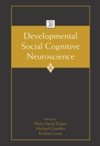
Developmental psychology
Source: Wikipedia. Pages: 101. Chapters: Child, Maslow's hierarchy of needs, Human development, Behavior analysis of child development, Speech perception, Intelligence, Positive Disintegration, Environmental enrichment, Levels of Consciousness, Kohlberg's... Viac o knihe
Produkt je dočasne nedostupný
22.70 €
bežná cena: 25.80 €
O knihe
Source: Wikipedia. Pages: 101. Chapters: Child, Maslow's hierarchy of needs, Human development, Behavior analysis of child development, Speech perception, Intelligence, Positive Disintegration, Environmental enrichment, Levels of Consciousness, Kohlberg's stages of moral development, Speech repetition, Erikson's stages of psychosocial development, Psychosexual development, Learning, Motor theory of speech perception, Spiral Dynamics, Developmental-Behavioral Screening and Surveillance, Imaginary friend, Autism spectrum, Nature deficit disorder, Loevinger's stages of ego development, Evolutionary developmental psychology, Spoiled child, Genetic epistemology, Kharkov School of Psychology, Adaptive Behaviors, Chickering's theory of identity development, Positive Adult Development, Display rules, Infant Potty Training, Emerging adulthood, Ecological Systems Theory, Barrel children, Toilet training, Cultural-historical psychology, Fowler's stages of faith development, Domain specificity, Developmental stage theories, Mentalization, Developmental psychobiology, Life course theory, Thematic coherence, Murray's psychogenic needs, Adolescent crystallization, Scale error, Maturity, Epigenetic principle, In a Different Voice, Private speech, Personal fable, Stage-Crisis View, Discrete Emotions Theory, Mental age, Distancing, Corumination, Evolutionary developmental psychopathology, Arrested development, Nonuniversal theory, Epigenetic theory, Imaginary audience, Kewpie doll effect, Developmental disorder, Centration, Domain-general learning, Basic Anxiety, Domain-specific learning, Forensic developmental psychology, Microgenetic design, Ethics of justice, Ontogenetic parade, Papert's principle, Perceptual narrowing, Ordinal numerical competence. Excerpt: Child development in behavior analytic theory has origins in John B. Watson's behaviorism. Watson wrote extensively on child development and conducted research (see Little Albert experiment). Watson was instrumental in the modification of William James' stream of consciousness approach to construct a stream of behavior theory. Watson also helped bring a natural science perspective to child psychology by introducing objective research methods based on observable and measurable behavior. Following Watson's lead, B.F. Skinner further extended this model to cover operant conditioning and verbal behavior. In doing this, Skinner's radical behaviorism focused the science on private events such as thinking and feeling and how they are shaped by interacting with the environment. Bijou (1955) was the first to bring this approach to human children. In the 1960s, while at the University of Kansas in the home economics/family life department, Sidney Bijou and Donald Baer began to apply behavior analytic principles to child development in an area referred to as "Behavioral Development" or "Behavior Analysis of Child Development". Skinner's behavioral approach and Kantor's interbehavioral approach was adopted in Bijou and Baer's model. Bijou and Baer created a three-stage model of development (e.g. basic, foundational, and societal). In behavior analysis, the stages are neither essential nor explanatory. They posit that these stages are socially determined, although behavior analysts tend to focus much more on change points or cusps (behavioral cusp) rather than stages. While not all cusps result in a stage change, all stage changes do involve cusps. In the behavioral model, development is represented as behavio...
- Vydavateľstvo: Books LLC, Reference Series
- Formát: Paperback
- Jazyk:
- ISBN: 9781157239802


 Anglický jazyk
Anglický jazyk 









